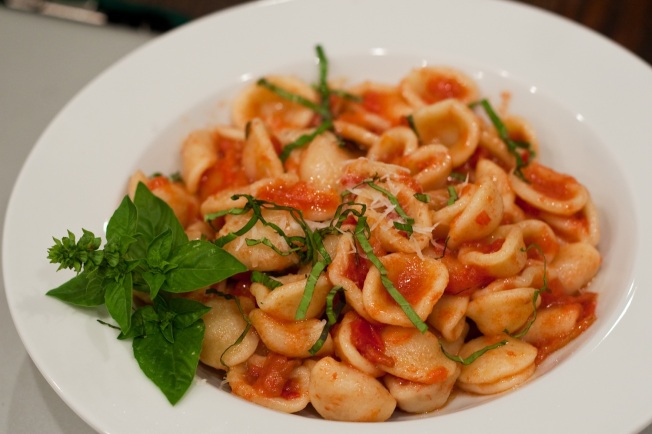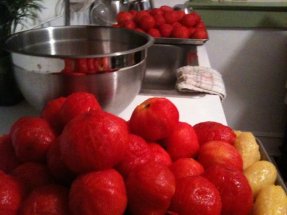When Mom said we were having a vegetable for dinner – say zucchini or green beans – it was, typically, just that. They were steamed, seasoned with salt and pepper, and possibly tossed with fresh herbs, usually parsley or basil from the garden. If Mom felt the rest of the meal was sufficiently healthy, she would add a small pat of butter. This, it turns out, is a fabulous way to serve almost any vegetable.
We should have been less surprised then, I suppose, by the overwhelming success of a recent attempt at zucchini pasta. I think it was the “pasta” that misled us. I mean, I have trouble thinking that sautéed strips of squash are in any way going to deliver the deep satisfaction of semolina spaghetti. I was wrong. (And, because I would never hear the end of it from my husband, let’s keep that little admission just between us.)
The long strips we quickly shaved with a vegetable peeler resembled wide pappardelle noodles. Cooked over low heat to keep the flavor light, we tossed in garlic and a splash of lemon juice, fresh basil and a grating of Parmesan cheese. We then made another batch, arguing that we should probably try adding fresh tomato.
Our third panful confirmed it was actually fine without the tomato, and the fourth we needed for a photograph. We are currently planning future batches to serve under chicken piccata and shrimp scampi.
You know, just to be on the safe side, I going to retract any admission that I was wrong. Let’s simply say my Mom was very, very right.
Zucchini Pappardelle Pasta
Serves 4-6 as a side dish
Ingredients:
- 2 tbs olive oil – the good stuff!*
- 2 small zucchini, sliced into thin ribbons
- 2 cloves garlic, minced
- 1 tbs chopped parsley
- 1 tbs chopped basil
- 1-2 tbs lemon juice
- 1/3 cup grated Parmesan cheese
*We use Sapore’s Frantoio, a light, buttery Italian oil. (Which you can order online.)
Directions:
- Warm 1 tbs olive oil over medium heat in a 12” skillet. Add zucchini and sauté, turning often with tongs, until beginning to soften, about 3 minutes.
- Add garlic and cook until zucchini is softened, about 3 minutes longer.
- In skillet, toss in parsley, basil, lemon juice and remaining 1 tbs olive oil.
- Remove from heat and season to taste with salt and pepper and serve topped with freshly grated Parmesan cheese.









